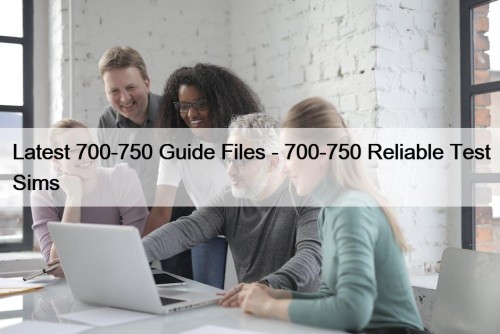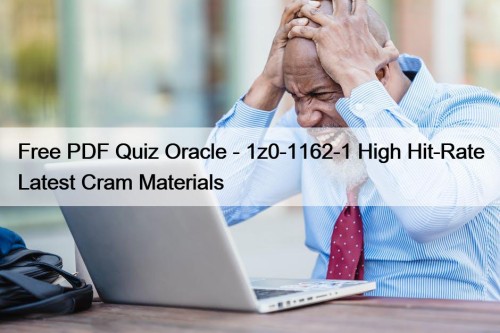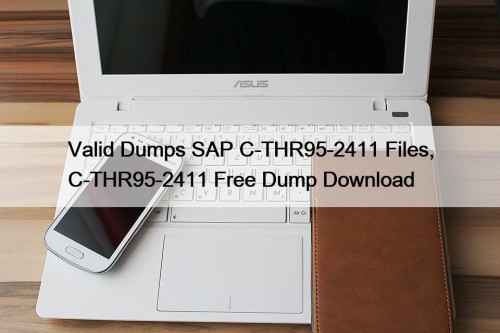Most Popular
 Latest 700-750 Guide Files - 700-750 Reliable Test Sims
Latest 700-750 Guide Files - 700-750 Reliable Test Sims
BONUS!!! Download part of VerifiedDumps 700-750 dumps for free: https://drive.google.com/open?id=1yWrWkptPFRwQl_VLW3hxx8kORWhK5PlFWhen ...
 Free PDF Quiz Oracle - 1z0-1162-1 High Hit-Rate Latest Cram Materials
Free PDF Quiz Oracle - 1z0-1162-1 High Hit-Rate Latest Cram Materials
They are using outdated materials resulting in failure and loss ...
 Valid Dumps SAP C-THR95-2411 Files, C-THR95-2411 Free Dump Download
Valid Dumps SAP C-THR95-2411 Files, C-THR95-2411 Free Dump Download
Have similar features to the desktop-based exam simulator contains actual ...



Fully Updated The Open Group OGBA-101 Dumps With Latest OGBA-101 Exam Questions [2025]

P.S. Free 2025 The Open Group OGBA-101 dumps are available on Google Drive shared by Lead2Passed: https://drive.google.com/open?id=1W6Ls_q_o0uBaKr1l2b91GkqAq8kvZT0e
Since inception, our company has been working on the preparation of OGBA-101 learning guide, and now has successfully helped tens of thousands of candidates around the world to pass the exam. As a member of the group who are about to take the OGBA-101 Exam, are you worried about the difficulties in preparing for the exam? Maybe this problem can be solved today, if you are willing to spend a few minutes to try our OGBA-101 actual exam.
The Open Group OGBA-101 Exam Syllabus Topics:
| Topic | Details |
|---|---|
| Topic 1 |
|
| Topic 2 |
|
| Topic 3 |
|
| Topic 4 |
|
| Topic 5 |
|
| Topic 6 |
|
>> Downloadable OGBA-101 PDF <<
Quiz 2025 The Open Group High Pass-Rate OGBA-101: Downloadable TOGAF Business Architecture Foundation Exam PDF
Before we start develop a new OGBA-101 study materials, we will prepare a lot of materials. After all, we must ensure that all the questions and answers of the OGBA-101 study materials are completely correct. First of all, we have collected all relevant reference books. Most of the OGBA-101 Study Materials are written by the famous experts in the field. They are widely read and accepted by people. Through careful adaption and reorganization, all knowledge will be integrated in our OGBA-101 study materials.
The Open Group TOGAF Business Architecture Foundation Exam Sample Questions (Q31-Q36):
NEW QUESTION # 31
What process turns a set of business capabilities into a structure that communicates the right amount of detail to different stakeholder groups?
- A. Mapping
- B. Stratification
- C. Categorization
- D. Layering
Answer: A
Explanation:
Mapping is the process that turns a set of business capabilities into a structure that communicates the right amount of detail to different stakeholder groups. Here's a detailed explanation:
Definition of Mapping:
Mapping: In the context of business architecture, mapping refers to the process of visually representing the relationships between business capabilities and other elements such as processes, value streams, and organizational units. This helps in communicating the structure and interactions within the business.
Purpose:
Communication: Mapping provides a clear and structured way to communicate the details of business capabilities to different stakeholder groups. It ensures that each group receives the appropriate level of detail needed for their role and decision-making.
Alignment: Helps in aligning business capabilities with strategic goals, processes, and organizational structure, ensuring that the architecture supports the overall business strategy.
TOGAF Reference:
Phase B: Business Architecture: During this phase, mapping is used to represent business capabilities and their relationships with other business elements. This helps in creating a coherent and comprehensive business architecture.
Capability Mapping: TOGAF emphasizes the use of capability mapping to understand and analyze how different capabilities support business processes and value streams.
Benefits:
Clarity and Understanding: Mapping provides a visual representation that enhances clarity and understanding of the business architecture. It helps stakeholders see the big picture and understand how different parts of the business fit together.
Stakeholder Engagement: By providing the right amount of detail to different stakeholders, mapping ensures effective engagement and collaboration across the organization.
In summary, mapping is the process that turns a set of business capabilities into a structure that communicates the right amount of detail to different stakeholder groups, facilitating clarity, understanding, and alignment.
NEW QUESTION # 32
In what TOGAF ADM phase is the information map linked to other business blueprints?
- A. Phase B
- B. Phase A
- C. Preliminary Phase
- D. Phase E
Answer: A
Explanation:
In TOGAF's Architecture Development Method (ADM), the information map is linked to other business blueprints duringPhase B: Business Architecture. Phase B is focused on developing the Business Architecture, which involves creating and aligning various business architecture artifacts, such as capability maps, value streams, organizational maps, and information maps.
The information map provides an outline of the critical information needed to support the business capabilities and processes. By linking the information map with other business blueprints (like the process and capability maps), architects can ensure alignment and coherence across business architecture components.
This helps in creating a clear, unified view of how information flows and supports business operations and value creation.
* Option B (Phase E)is incorrect because Phase E (Opportunities and Solutions) is primarily focused on identifying potential solutions and prioritizing initiatives for implementation.
* Option C (Phase A)is incorrect as Phase A (Architecture Vision) is focused on defining the scope and vision of the overall architecture effort and gaining stakeholder agreement.
* Option D (Preliminary Phase)is incorrect as it focuses on establishing the architecture framework and principles rather than creating detailed business blueprints.
Therefore,Phase B: Business Architectureis the correct answer, as it is the stage where the information map is integrated with other business architecture artifacts to create a cohesive business architecture.
NEW QUESTION # 33
Consider the following statements;
1. A whole corporation or a division of a corporation
2. A government agency or a single government department
3. Partnerships and alliances of businesses working together, such as a consortium or supply chain What are those examples of according to the TOGAF Standard?
- A. Enterprises
- B. Architectures Scopes
- C. Business Units
- D. Organizations
Answer: A
Explanation:
According to the TOGAF Standard, an enterprise is defined as any collection of organizations that has a common set of goals and/or a single bottom line1. The examples given in the question are all types of enterprises that can be the subject of enterprise architecture1.
In the context of TOGAF, the term 'enterprise' encompasses more than just a single organization. It refers to any collection of organizations that has a common set of goals. This can include, as described in the statements provided, entire corporations or their divisions, government agencies or departments, as well as business partnerships such as consortia or supply chains. TOGAF uses the term 'enterprise' to define the full scope of the entity that is the subject of planning, design, implementation, and operation of an Enterprise Architecture.
NEW QUESTION # 34
Which of the following is the element of a value stream stage that describes the end state condition denoting the completion of the value stream stage?
- A. Completion stage
- B. End point
- C. Target state
- D. Exit criteria
Answer: D
Explanation:
In TOGAF's Business Architecture, a value stream stage is a high-level representation of a sequence of activities that create value for an organization. The end state condition denoting the completion of a value stream stage is known as the "Exit Criteria." This term is used to specify the conditions that must be met for the stage to be considered complete, ensuring that the output meets the required quality and performance standards before progressing to the next stage. The concept of "Exit Criteria" is essential to ensure that each stage of the value stream adds the expected value and aligns with the overall business objectives.
NEW QUESTION # 35
Which of the following is a difference between an organization map and an organization chart?
- A. An organization map reduces the time, cost, and risk of business operations.
- B. An organization map can be impacted by a business model change.
- C. An organization map is limited to formal relationships between business units.
- D. An organization map highlights where in the organization that stakeholder concerns are not being addressed by a business architecture.
Answer: D
Explanation:
An organization map is a technique that can be used to show how a business architecture addresses stakeholder concerns across different parts of an organization3. It can highlight gaps or overlaps in the coverage of stakeholder concerns by a business architecture. An organization chart, on the other hand, is a diagram that shows the formal structure and hierarchy of an organization, such as reporting relationships and roles4. An organization chart does not necessarily show how stakeholder concerns are addressed by a business architecture.
NEW QUESTION # 36
......
You can learn OGBA-101 quiz torrent skills and theory at your own pace, and you are not necessary to waste your time on some useless books or materials and you will save more time and energy that you can complete other thing. We also provide every candidate who wants to get certification with free Demo to check our materials. It is time for you to realize the importance of our OGBA-101 Test Prep, which can help you solve these annoyance and obtain a OGBA-101 certificate in a more efficient and productive way.
Valid OGBA-101 Study Guide: https://www.lead2passed.com/TheOpenGroup/OGBA-101-practice-exam-dumps.html
- OGBA-101 Pdf Version 🥛 Sample OGBA-101 Test Online 🎤 Questions OGBA-101 Pdf 💄 Search for ⏩ OGBA-101 ⏪ on ⏩ www.testkingpdf.com ⏪ immediately to obtain a free download ✔OGBA-101 Valid Vce Dumps
- Pass Guaranteed Quiz The Open Group - Latest Downloadable OGBA-101 PDF 😠 Copy URL { www.pdfvce.com } open and search for ⇛ OGBA-101 ⇚ to download for free 😓Reliable OGBA-101 Test Answers
- Free PDF The Open Group - Authoritative Downloadable OGBA-101 PDF ⚒ Search on ☀ www.real4dumps.com ️☀️ for ➤ OGBA-101 ⮘ to obtain exam materials for free download 🔪OGBA-101 Examcollection
- OGBA-101 Exam Dumps Collection 🎺 OGBA-101 Pdf Version 🐠 Best OGBA-101 Study Material 🍚 Search for ➡ OGBA-101 ️⬅️ and easily obtain a free download on { www.pdfvce.com } 🩺OGBA-101 Valid Exam Cram
- OGBA-101 Examcollection ✉ OGBA-101 Pdf Version 🗻 Verified OGBA-101 Answers 👵 Enter ➡ www.actual4labs.com ️⬅️ and search for ▛ OGBA-101 ▟ to download for free 🌎Verified OGBA-101 Answers
- Free PDF Quiz Latest OGBA-101 - Downloadable TOGAF Business Architecture Foundation Exam PDF ℹ Download { OGBA-101 } for free by simply entering 「 www.pdfvce.com 」 website 🎊OGBA-101 Valid Exam Cram
- The Open Group OGBA-101 PDF Questions - Most Effective Exam Preparation Method 🦲 Search for 「 OGBA-101 」 and download it for free on ☀ www.examdiscuss.com ️☀️ website 🈺OGBA-101 Valid Exam Cram
- Free PDF The Open Group - Authoritative Downloadable OGBA-101 PDF 🥂 The page for free download of ⇛ OGBA-101 ⇚ on ➥ www.pdfvce.com 🡄 will open immediately 🤫Exam OGBA-101 Score
- Pass Guaranteed Quiz The Open Group - Latest Downloadable OGBA-101 PDF 💜 Easily obtain free download of ➠ OGBA-101 🠰 by searching on ▛ www.dumpsquestion.com ▟ 🕧Questions OGBA-101 Pdf
- OGBA-101 Exam Online 🎰 Best OGBA-101 Study Material 👣 OGBA-101 Exam Online 🪑 The page for free download of [ OGBA-101 ] on ➤ www.pdfvce.com ⮘ will open immediately 🎒Free OGBA-101 Exam Questions
- OGBA-101 High Passing Score 📦 Verified OGBA-101 Answers ☮ Questions OGBA-101 Pdf 💨 Open ✔ www.pass4leader.com ️✔️ enter ▷ OGBA-101 ◁ and obtain a free download 🤠OGBA-101 High Passing Score
- OGBA-101 Exam Questions
- sics.pk studysmart.com.ng skillslearning.online edyoucater.com lms.ait.edu.za brain-skill.com knowledgebenefitco.com skillhive.org youtubeautomationbangla.com academybodhivriksha.com
BTW, DOWNLOAD part of Lead2Passed OGBA-101 dumps from Cloud Storage: https://drive.google.com/open?id=1W6Ls_q_o0uBaKr1l2b91GkqAq8kvZT0e
Tags: Downloadable OGBA-101 PDF, Valid OGBA-101 Study Guide, Exam OGBA-101 Outline, OGBA-101 Trustworthy Exam Content, Practice OGBA-101 Exams Free